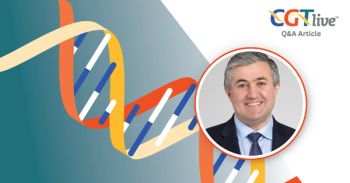
Angelman Syndrome Gene Therapy Trial Resumes Following Clinical Hold
A clinical hold was previously placed after patients treated with the highest dose developed lower extremity weakness.
The FDA has lifted their
The trial was allowed to resume after trial protocols were amended. Instead of the previous 4 dose levels of GTX-102, all patients will be treated with a lower 2 mg dose after lower extremity weakness, in some cases impacting the ability to walk, was previously observed in patients treated with high-dose GTX-102.
“The dosing protocol across the three regions is designed to provide a broad picture on dose response to inform loading and maintenance regimens as we move to the next phase of development,” said Scott Stromatt, MD, chief medical officer, GeneTx, in a statement.1 “We are working with urgency to begin treating study participants in all three regions over the next several months recognizing that there is no approved therapy available for the Angelman community.”
The new trial protocols include 8 new patients between 4 and 8 years of age not previously treated with GTX-102 that will be enrolled into an active group and a comparator group. The active group will receive 2 mg of GTX-102 monthly for 4 months. Groups will be compared at baseline and 128 days, after which participants in the comparator group will be able to receive GTX-102 at the same dosing schedule.
READ MORE:
Patients that have already completed dose-loading to different dose levels of GTX-102 will move to a maintenance phase in which they will receive 2 mg of GTX-102 every 3 months while being monitored for efficacy and safety. According to the study protocol separately approved in the UK and Canada, participants will receive starting doses of 3.3 mg and 5 mg, which can be increased up to a maximum of 14 mg.
The phase 1/2, open-label study is evaluating primary outcome measures focused on safety, including the incidence of adverse events (AEs) and serious AEs, as well as AE severity, and secondary outcome is evaluating pharmacokinetics of GTX-102. Additional efficacy outcomes include pharmacodynamics of GTX-102 and changes in development, motor function, communication, seizure frequency, sleep, adaptive behavior, and clinical global impression – Angelman syndrome (CGI-AS) status.
The trial was put on hold after Ultragenyx announced initial efficacy results but also cases of a serious AE of lower extremity weakness in October 2020.2 All 5 patients treated with a single administration of the highest dose of GTX-102 experienced this AE as well as 1 patient treated with a single administration of the second-highest dose. In 2 patients, the weakness progressed to an inability to walk or bear weight. The AE has completely resolved in all patients.
“The UBE3A antisense transcript targeted by GTX-102 is a viable target for treatment,” stated Scott Stromatt, MD, chief medical officer, GeneTx, in a statement at that time.2 “The results observed to date are encouraging and we look forward to resuming dosing at lower doses to help avoid side effects.”
In terms of efficacy, all 5 patients had meaningful improvements in their individual CGI-I-AS score at 128 days after treatment. All patients also experienced improvements in sub-scale growth scores of expressive and/or receptive communication in Bayley-4 score and 3 patients showed improvements in the Observed Reported Communication Ability measure of expressive, receptive, and pragmatic communication.
“It is especially amazing that families are asking me repeatedly when they can start treatment again despite the side effects that their child experienced. That speaks to the value of what they were seeing in their child,” investigator Elizabeth M. Berry-Kravis, MD, PhD, professor, pediatrics, neurological sciences and biochemistry, Rush University Medical Center, added to the statement.2
REFERENCES
1. GeneTx and Ultragenyx announce FDA has removed clinical hold on phase 1/2 clinical study of GTX-102 for the treatment of Angelman syndrome in the US News release. Ultragenyx. September 27, 2021. https://www.globenewswire.com/news-release/2021/09/27/2303564/20739/en/GeneTx-and-Ultragenyx-Announce-FDA-has-Removed-Clinical-Hold-on-Phase-1-2-Clinical-Study-of-GTX-102-for-the-Treatment-of-Angelman-Syndrome-in-the-U-S.html
2. GeneTx and Ultragenyx announce positive interim phase 1/2 data on investigational GTX-102 demonstrating improvement in patients with Angelman syndrome. News release. Ultragenyx. October 26, 2020. https://ir.ultragenyx.com/news-releases/news-release-details/genetx-and-ultragenyx-announce-positive-interim-phase-12-data #
Newsletter
Stay at the forefront of cutting-edge science with CGT—your direct line to expert insights, breakthrough data, and real-time coverage of the latest advancements in cell and gene therapy.





































